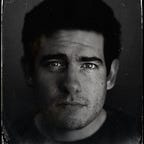The closest I get to a digital Leica R
The Leica R 35mm camera system was introduced in the mid-1960s. A system that I’ve never used nor been particularly interested in. but as an advocate for adapting forgotten, vintage lenses onto modern cameras, I couldn’t resist when I found a pair of 28mm f/2.8 R and 90mm f/2 R lenses at a local estate sale. Instead of buying a Leica R film body to use the lenses with, I mounted them on my Fujifilm X-T3 body, which made me wonder: is this what a digital Leica R would feel like?
Background
For this to work, I mounted the R lenses onto a Zhongyi Lens Turbo. My Lens Turbo is an EOS mount, so I had an EOS to Leica R adapted between Turbo and the lens itself. One could use a dummy adapter, but I wanted the native focal length of 28mm and 90mm. I know it sounds complicated, but it isn’t. Though I don’t have data to support this, I seem to get a half or whole stop more light when shooting with the Lens Turbo wide open, as if the f/2 aperture becomes an f/1.8.
In short, my setup is: Fujifilm X-T3 -> Lens Turbo -> Adapter -> Lens
Ergonomics and User Experience
In theory, this combo doesn’t make a lot of sense: one could have two native Fujifilm prime lenses in similar focal lengths that would provide auto-focus, lighter weight, shallower depth of field, and ‘better’ optics for roughly the same price as these two Leica R primes. So what’s the point? Well, because I wanted to know how a set of 50-year-old lenses holds up today. While this isn’t an R camera, the size and weight of my X-T3 is similar, with an R4 being around 100g heavier. But more so, I enjoy thinking about user experiences, and this experiment gave me something to think about.
Although this may not be the most logical sound setup to shoot, it’s loads of fun and works seriously well together, despite being half a century apart. The 28mm f/2.8 has a perfect focus-throw, allowing me to quickly snap in a busy street. It’s small, even with the Lens Turbo, and it’s everything I wanted the Fujifilm 18mm f/2 to be: Fun and unobtrusive. The 90mm f/2 feels more tactile than any modern lens I’ve used, yet not overly heavy on the X-T3. It would feel awkward on an X-E or X-Pro model but superb on an X-T body. But not only that; where it shines is in its optics.
Image Quality
This is where it gets interesting. A pair of lenses from the 70s aren’t as perfect as contemporary lenses, and that’s exactly what I like. The 90mm f/2 is tack sharp when wide open, and the bokeh is full of character and has that ‘pop’ that I only get from my 56mm f/1.2 lens. There’s nothing otherworldly about the 28mm f/2.8 lens; it’s contrasty and has personality while not as sterile as modern lenses. I could happily ‘one lens’ it with straight-out-of-camera files with this lens.
I don’t know how this pair holds up for photographers who pixel peep because it’s not something that I care much about. The Lens Turbo doesn’t decrease the optical quality, maybe slightly in the corners, but not really noticeable. I want my images to produce a story with unique visual character, and the 28mm and 90mm lenses do precisely that.
Conclusion
To answer my question, I do not know what a digital Leica R would feel like, nor is that really the point. In a world of consuming the latest and greatest camera equipment, it’s a triumph that a pair of lenses can be as relevant today as they were 50 years ago. Sure, a ‘digital Leica R’ may be gimmicky. However, the playfulness of adapting camera parts together while not having the instant gratification of running all settings in auto has been refreshing. Capturing a couple of great images while creating lasting memories is just the cherry on top.
All images were shot in JPEG on a Fujifilm X-T3 with homemade Lightroom Presets. Shot in various places in Louisiana during winter ‘22/23.
